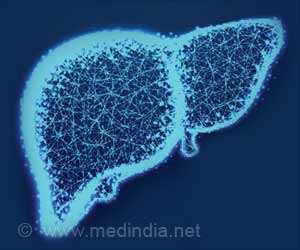They are believed to be able to detect various volatile organic compounds released during various metabolic processes in the body, including those caused by bacterial, viral, and parasitic infections.
Preliminary data suggests that
dogs can be trained to detect samples from patients with COVID-19 infection within weeks, with a degree of accuracy comparable to that of a standard PCR nasal and throat swab test
.
Although promising, these lab data results needed to be replicated under real-life conditions. Therefore, the researchers trained four dogs to sniff out SARS-CoV-2 in the spring of 2020. Each of the dogs had previously been trained to sniff out illicit drugs, dangerous goods, or cancer.
Dogs Can Identify COVID-19 Patients
To test the dogs’ detection abilities,
420 volunteers each provided four skin swab samples. Each of the four dogs sniffed skin samples from 114 of the volunteers who tested positive for SARS-CoV-2 in a PCR swab test and from 306 who tested negative.
Samples were randomly presented to each dog during seven testing sessions.
Overall, diagnostic accuracy for all sniffed samples was 92%: combined sensitivity (accuracy in detecting those with COVID-19 infection) and specificity (accuracy in detecting those without COVID-19 infection) were 92% and 91%, respectively.
Only minor variation was observed between dogs: the best performance reached 93% in sensitivity and 95% in specificity; the worst reached 88% sensitivity and 90% specificity. These dogs have identified the passengers infected with COVID-19 infection faster than any other tests.
Some 28 of the positive samples came from people who had no symptoms. Only one was incorrectly identified as negative and two were not sniffed, meaning that 25 of the 28 (just over 89%) were correctly identified as positive: the lack of symptoms did not appear to affect the dogs’ performance.
The four dogs then went to work sniffing out 303 incoming passengers at Helsinki-Vantaa International Airport, Finland, between September 2020 and April 2021.
Each passenger also underwent a PCR swab test.
The PCR and sniffer results were in agreement for 296 of 303 (98%) of the real-life samples. Dogs correctly identified samples as negative in 296 of 300 (99%) PCR-negative swab tests and identified 3 PCR-positive cases as negative.
After re-evaluation with clinical and serological data, one was considered negative for SARS-CoV-2, another positive for SARS-CoV-2, and one probably positive result of the post-infectious PCR test.
Similarly, dogs indicated four PCR-negative cases as positive. All of these were judged SARS-CoV-2 negative or without any COVID-19 infection.
Because the prevalence of SARS-CoV-2 among airport passengers was relatively low (less than 0.5%), 155 samples from people who had tested positive in a PCR swab test were also presented to the dogs.
The dogs correctly identified just under 99% of them as positive. If these “spike” samples had been included in the real-life study, the dogs’ performance would have reached a sensitivity of 97% and a specificity of 99%.
Research Based on Data Obtained
Based on these results, a research was conducted and calculated the proportion of true positive results (PPV) and the proportion of true negative results (NPV) in two hypothetical scenarios reflecting a population prevalence of SARS-CoV-2 to be 40% and 1%.
For a prevalence of 40%, they estimated a PPV of 88% and a NPV of 94.5%. This means that the information provided by sniffer dogs increases the chances of detection by around 90%.
For a population prevalence of 1%, on the other hand, they estimated a PPV of just under 10% and an NPV of just under 100%.
In both scenarios, researchers say that the high NPV supports the use of sniffer dogs for detection, with the goal of excluding people who don’t need a PCR swab test.
And they suggest that “dogs could be used both in sites of high SARS-CoV-2 prevalence, such as hospitals (to prescreen patients and personnel), as well as in low prevalence sites, such as airports or ports (to prescreen passengers).” They say that this would save time and resources considerably for the detection of passengers infected with COVID-19 in an airport.
The researchers acknowledge that sniffer dogs also find out other substances that may misidentify these substances as SARS-CoV-2 positive. They say that the required storage period of the training and spiked samples may also have affected the viability of the volatile organic compounds.
A key finding was that the
sniffer dogs were less successful at correctly identifying the alpha variant (of COVID-19 infection), as they had been trained to detect the wild type
. But the study researchers say that this identification just goes to show how good dogs are at distinguishing between different scents.
“This observation is remarkable as it proves the scent dogs’ robust discriminatory power. The obvious implication is that training samples should cover all epidemiologically relevant variants. Our preliminary observations suggest that dogs primed with one virus type can in a few hours be retrained to detect its variants.”
Source: Medindia



